For 34 years, The Bahamas has enforced an annual closed season for the Caribbean Spiny Lobster – commonly known as crawfish. From April 1st to July 31st, crawfish are given the chance to reproduce and replenish their population, in return allowing Bahamian fishermen to restock on tasty crawfish tails once the season opens.
Reproduce
Crawfish mate throughout the summer months.

When mating, the male passes a sperm packet to the female through an opening called the genital pore. The packet attaches to the underside of the female’s carapace and hardens. Once hardened, the packet is referred to as a black ‘tar spot’.
The female then releases bright orange eggs and fertilizes them with the sperm from the ‘tar spot’. When the eggs are fertilized, the female houses them beneath her abdomen. The eggs must remain attached to the female in order to hatch.
Female crawfish can lay eggs several times in one season. The larger the female the more eggs she can lay. A female with a 6’ tail can produce 285,000 eggs while a female with a 9’ tail can produce 860,000 eggs every time they spawn.
LIFE CYCLE OF SPINY LOBSTER

Replenish
Crawfish larvae are especially vulnerable within the first 6-8 months of life. During this time, they are floating as zooplankton in the open ocean and are often eaten by other tiny marine animals. This is also the time when they go through metamorphosis.
Once metamorphosis is complete, the juvenile crawfish begin to look more like adult crawfish. They then settle into nearshore areas such as mangrove creeks and seagrass beds.
Ensuring that crawfish are able to reproduce and that many of their offspring grow to maturity is very important. This is where closed seasons and Marine Protected Areas (MPAs) play a crucial role.

Closed seasons help ensure that during peak reproductive seasons, crawfish have a chance to reproduce. Effective MPAs serve as replenishment zones for crawfish by increasing the number of large adult crawfish. MPAs also improve the chances of mature crawfish finding each other to reproduce.
“Closed seasons and Marine Protected Areas assist in the efforts to preserve our marine ecosystems, ensuring fish for future generations to come.”
– Allison Longley, Education and Outreach officer, BREEF
Restock
It is vital that crawfish get a chance to reproduce and replenish their population. They bring in millions of dollars to the economy every year and help support communities throughout the country. A healthy population of crawfish is a good thing for The Bahamian economy.
“When we were trapping we used to do good. We caught a lot of crawfish and all of our bills got paid. A healthy population of crawfish is crucial to sustaining the crawfish industry.”
– Jacob Leroy Fox, Bahamian Fisherman for 30 years
Laws and guidelines were established to ensure that The Bahamas maintains a healthy population of crawfish. Some of the regulations pertaining to crawfish include:
- The minimum harvestable size is 3¼” carapace length or 5½” tail length.
- A closed season: April 1st – July 31st
- A permit is required for all vessels trapping crawfish
- Crawfish traps must be wooden traps
- The possession of ‘berried’ (egg-bearing) crawfish is prohibited.
- The Sportsfishing (non-Bahamian or Bahamian resident) bag limit is 10 crawfish per vessel.
See a complete list of Fisheries laws and regulations at www.laws.bahamas.gov.bs.
Responsible fishermen know and obey fishery regulations, respect closed seasons and respect the rules of Marine Protected Areas. They practice sustainable harvesting techniques and only buy and sell legal seafood.
April 1st marks the start of another closed crawfish season and we encourage everyone to adhere to the fishery regulations. By doing so, you are helping to preserve the next generation of crawfish in The Bahamas.
Learn more by reading our crawfish guide for Bahamian schools.

For more information on fisheries regulations please visit www.breef.org and download the FishRules app for free on your android or iPhone today!



Post a comment